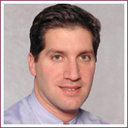Upper endoscopy for gastroesophageal reflux disease: best practice advice from the clinical guidelines committee of the American College of Physicians.
الكلمات الدالة
نبذة مختصرة
BACKGROUND
Upper endoscopy is commonly used in the diagnosis and management of gastroesophageal reflux disease (GERD). Evidence demonstrates that it is indicated only in certain situations, and inappropriate use generates unnecessary costs and exposes patients to harms without improving outcomes.
METHODS
The Clinical Guidelines Committee of the American College of Physicians reviewed evidence regarding the indications for, and yield of, upper endoscopy in the setting of GERD, and to highlight how clinicians can increase the delivery of high-value health care. BEST PRACTICE ADVICE 1: Upper endoscopy is indicated in men and women with heartburn and alarm symptoms (dysphagia, bleeding, anemia, weight loss, and recurrent vomiting). BEST PRACTICE ADVICE 2: Upper endoscopy is indicated in men and women with: Typical GERD symptoms that persist despite a therapeutic trial of 4 to 8 weeks of twice-daily proton-pump inhibitor therapy. Severe erosive esophagitis after a 2-month course of proton-pump inhibitor therapy to assess healing and rule out Barrett esophagus. Recurrent endoscopy after this follow-up examination is not indicated in the absence of Barrett esophagus. History of esophageal stricture who have recurrent symptoms of dysphagia. BEST PRACTICE ADVICE 3: Upper endoscopy may be indicated: In men older than 50 years with chronic GERD symptoms (symptoms for more than 5 years) and additional risk factors (nocturnal reflux symptoms, hiatal hernia, elevated body mass index, tobacco use, and intra-abdominal distribution of fat) to detect esophageal adenocarcinoma and Barrett esophagus. For surveillance evaluation in men and women with a history of Barrett esophagus. In men and women with Barrett esophagus and no dysplasia, surveillance examinations should occur at intervals no more frequently than 3 to 5 years. More frequent intervals are indicated in patients with Barrett esophagus and dysplasia.


